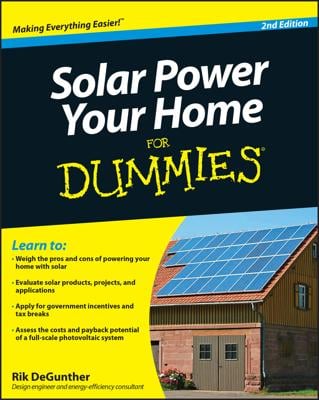Want to take advantage of solar power in your home? Whether you’re looking to save on your energy costs by adding a few solar components or you want to build a solar-powered house from the ground up, Solar Power For Dummies, 2nd Edition takes the mystery out of this energy source and shows you how to put it to work for you!
This new edition gives you hands-on tips and techniques for making your home more energy-efficient though solar power—and helping the planet at the same time. Plus, you’ll get all the latest information on changes to federal, state, and local regulations, laws, and tax incentives that seek to make solar-power adoption more feasible.
- Expanded coverage of the technology that underpins full-scale solar-power systems for the home
- New small- and mid-sized solar products, projects, and applications
- Rik DeGunther is a design engineer who started his own energy consulting firm
Featuring ten of the easiest and cheapest DIY solar projects, Solar Power For Dummies, 2nd Edition is the fun and easy way to meet your energy needs with this clean power source!
Want to take advantage of solar power in your home? Whether you’re looking to save on your energy costs by adding a few solar components or you want to build a solar-powered house from the ground up, Solar Power For Dummies, 2nd Edition takes the mystery out of this energy source and shows you how to put it to work for you!
This new edition gives you hands-on tips and techniques for making your home more energy-efficient though solar power—and helping the planet at the same time. Plus, you’ll get all the
- Expanded coverage of the technology that underpins full-scale solar-power systems for the home
- New small- and mid-sized solar products, projects, and applications
- Rik DeGunther is a design engineer who started his own energy consulting firm
Featuring ten of the easiest and cheapest DIY solar projects, Solar Power For Dummies, 2nd Edition is the fun and easy way to meet your energy needs with this clean power source!

